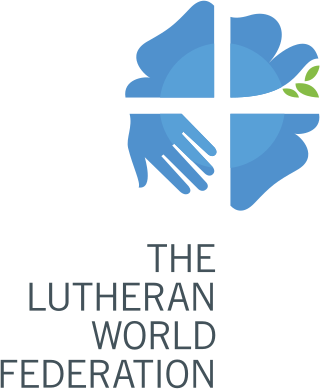
The Lutheran World Federation is a global communion of national and regional Lutheran denominations headquartered in the Ecumenical Centre in Geneva, Switzerland. The federation was founded in the Swedish city of Lund in the aftermath of the Second World War in 1947 to coordinate the activities of the many differing Lutheran churches. Since 1984, the member churches are in pulpit and altar fellowship, with common doctrine as the basis of membership and mission activity.

Johannes Evangelista Gossner, German divine and philanthropist, was born at Hausen near Augsburg.
Northern Evangelical Lutheran Church (NELC) is a multi-lingual Lutheran Christian church that is centred mainly in four states of North India - Jharkhand, Assam, Arunachal Pradesh, and Bengal. The reach of the Church extends into Nepal and the NELC also works in Bhutan. It is one of the three Lutheran denominations in northeast India along with the Bodo Evangelical Lutheran Church and the Gossner Evangelical Lutheran Church.
The Gossner College is one of oldest institutions formed by the Gossner Evangelical and Lutheran Church. It is a minority college affiliated to Ranchi University.
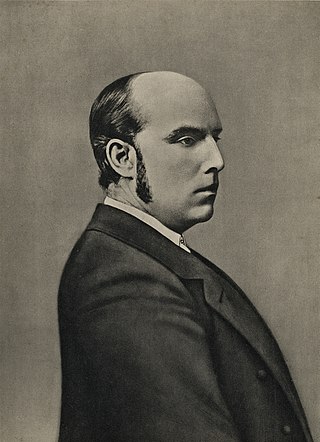
Lars Olsen Skrefsrud was a Norwegian Lutheran missionary and language researcher in India.

John Christian Frederick Heyer was the first missionary sent abroad by Lutherans in the United States. He founded the Guntur Mission in Andhra Pradesh, India. "Father Heyer" is commemorated as a missionary in the Calendar of Saints of the Evangelical Lutheran Church in America on November 7, along with Bartholomaeus Ziegenbalg and Ludwig Ingwer Nommensen.
Protestants in India are a minority and a sub-section of Christians in India and also to a certain extent the Christians in Pakistan before the Partition of India, that adhere to some or all of the doctrines of Protestantism. Protestants in India are a small minority in a predominantly Hindu majority country, but form majorities in the north-eastern states of Meghalaya, Mizoram and Nagaland and significant minorities in Konkan division, Bengal, Kerala and Tamil Nadu, with various communities in east coast and northern states. Protestants today trace their heritage back to the Protestant reformation of the 16th century. There are an estimated 20 million Protestants and 16 million Pentecostals in India.
Gossner Theological College is the only Theological Seminary of Jharkhand affiliated to Serampore College. It is owned by Gossner Evangelical Lutheran Church in Chotanagpur and Assam.
The National Council of Churches in India is an ecumenical forum for Protestant and Orthodox churches in India. It provides a platform for member churches and organizations to act on common issues relating to Christianity in India.

Christians are a religious community residing in the Indian state of Jharkhand. As per 2011 Census of India, 4.3% of people in Jharkhand are Christians. Christians are majority in Simdega district of Jharkhand.
Arcot Lutheran Church is a Christian denomination in India. It has about 40,000 members. It belongs to National Council of Churches in India, United Evangelical Lutheran Church in India, Lutheran World Federation and World Council of Churches. The Bishop and the President of this church is Rt. Rev. V. Samuel Kennady Its headquarters are in Cuddalore, Tamil Nadu. The other churches belonging to the United Evangelical Lutheran Church in India are:
South Andhra Lutheran Church is a Christian denomination in India. It is Telugu-speaking. It is led by Bishop Rev.E.Vijayabhasker, who elected by an election It has tens of thousands of members. It belongs to the Lutheran World Federation. Several church lands which were given to the leaders by missionaries are being sold after decades. The other churches belonging to the United Evangelical Lutheran Church in India are:
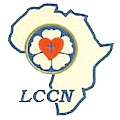
The Lutheran Church of Christ in Nigeria (LCCN) is a major Lutheran denomination in Nigeria, a member of the Lutheran World Federation (LWF).
Telugu Christians or Telugu Kraistava are a religious community who form the third-largest religious minority in the Indian states of Andhra Pradesh and Telangana. According to the 2001 Census of India, there are over a million Christians in Andhra Pradesh, constituting around 1.51% of the state's population. This is a decrease from the 1971 census figure which put the percentage of Christians in state as 2%, and this decrease is mainly a result of low birth rates and emigration.
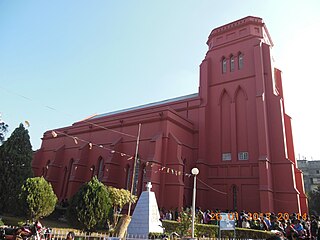
North Western Gossner Evangelical Lutheran Church is the fourth largest Lutheran church in India. The NWGEL Church also has a presence in Nepal. Most NWGEL church members are from indigenous and tribal communities. NWGEL Church became an autonomous church on 10 July 1919. On 28 April 1989, the United Evangelical Lutheran Church in India gave provisional membership to NWGEL Church. NWGEL Church is a member of the National Council of Churches in India and local bodies such as Bengal Christian Council, Jharkhand Christian Council, Bihar Christian Council, and Chattishgarh Christian Council.
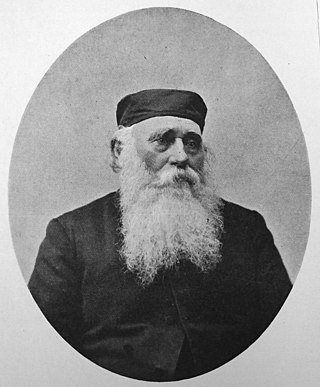
Hans Peter Boerresen was a Danish missionary to India. He and Norwegian missionary Lars Olsen Skrefsrud were the founders of Northern Evangelical Lutheran Church—centered in North India - Bihar, Assam, and Bengal - extending into Nepal and Bhutan.
North East India Christian Council (NEICC) is a Protestant ecumenical council of North East India, affiliated to the National Council of Churches in India as one of the regional councils in the year 1939.













